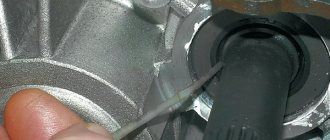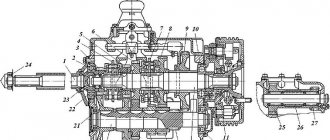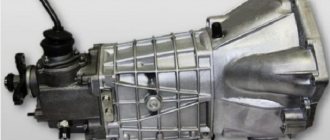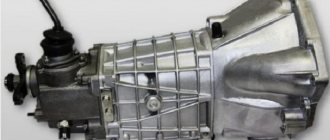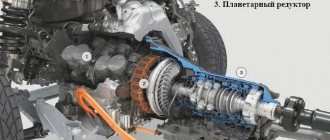Priora family
Before moving on to reviews of the Priora hatchback, let's talk about the history of this domestic family of cars.
Initially, AvtoVAZ launched the production of Priora sedans. This happened back in 2007. The hatchback model was first released in February 2008. By the end of the year, an updated modification with a station wagon body was presented, and six months later it was launched into mass production.
It is worth noting that within the framework of the Priora model, AvtoVAZ produced a modification of the coupe in small series (it was a branded three-door hatchback), and a convertible was also being developed.
Since 2009, Priora has finally ousted the Lada-110 family of cars from the plant assembly line. At the same time, over the years the car continued to be improved. For example, in 2011, the rear view mirrors, front bumper and steering wheel were replaced. Moreover, new functions appeared, for example, in the “Standard” configuration there was an 8-valve engine with a connecting rod and piston group, which was considered lightweight.
A large-scale restyling of the car was carried out in 2013. Due to this, it was possible to significantly increase its comfort, refresh its appearance, and make it safer. The designers have modernized its driving characteristics. In addition, the head optics were equipped with daytime running lights, a directional stability system appeared, and sound insulation was improved.
In 2014, Priora appeared with a robotic gearbox. This was the company’s own development; the car was created on the basis of a classic 5-speed gearbox, using an electronic control unit and electric actuators.
Since 2015, all cars belonging to this family were equipped with a 5-speed manual transmission, which had exactly the same shift layout as in the classic Zhiguli, that is, the reverse gear was engaged to the right and backward.
In 2021, the millionth Priora was rolled off the assembly line, which became an important and landmark achievement in the history of the company. Soon after this, it became known that from the summer of 2021, Priora would officially be discontinued.
Ergonomics in the car
If we talk about ergonomics and the quality of finishing materials in the cabin, then, taking these indicators into account, we can say the following: this car is the best car in Russia. The front seats have a good profile and good lateral support. The adjustment range is also quite large; a person of average height will be comfortable in this car. But if the person is tall, it will be a little more difficult. Because everything depends on the steering column and its tilt. The plastic covering on the front panel is quite soft, but it cannot be called high-quality. There is also nothing good to say about the steering wheel. Made of cheap and unpleasant-to-touch plastic, it does not evoke much sympathy. The steering column switches are located far from the steering wheel, and you have to reach them.
Read also: VAZ 2106 starting device
Also, if we take into account the ergonomic shortcomings, this list can include the front armrest, which is excessively high. It interferes with control of the gearbox, which, on the contrary, is compacted into the central tunnel. Rear passengers will feel comfortable if a driver of average height sits in front of them, in which case there will be enough legroom. If you sit tighter, there is enough room for three. I am also not satisfied with the quality of the window regulators. Despite the fact that the windows have an electric drive, they only go down halfway. But that's not all the shortcomings. The front windows also cannot be lowered all the way. The doors of the new product were made from its predecessor, but they did this because the central pillar was expanded, and therefore they had to work on safety and leave the old doors.
Representatives of the family
You can find a variety of reviews about the Priora hatchback. Some are satisfied with the purchase, while others scold the domestic auto industry in the old fashioned way.
It is worth noting that in addition to the hatchback, several other cars were produced in this family, which were no less popular. For example, the sedan was originally created on the basis of the VAZ-2110 car. It was a longer version.
The hatchback became a deep modernization of the VAZ-2112 with a modified body design, updated panels, a fundamentally different rear part and original lighting equipment. The hatchback, to which we dedicated this article, remained in mass production from 2008 to 2015. It had a 1.6 liter engine, its power varied from 81 to 106 horsepower. It is noteworthy that despite the existence of a common successor, which was actually considered the Lada Vesta, a replacement for the hatchback was never released, although many expected it.
Station wagon cars were created on the basis of the VAZ-2170. Their mass production has continued since the spring of 2009.
Let's get to know each other better
VAZ has been producing Priora since 2007. It was created on the platform of the notorious “ten” and inherited a lot from it. Priora is called a car for young people. She is praised for her good speed and ability to stay on the road well. There are complaints about the build quality and the low cross-country ability is not suitable for everyone. Nevertheless, the car is extremely popular.
External upgrade
In 2013, VAZ presented an updated version of the Lada Priora. It was equipped with a number of new options, improving its technical capabilities. The car has also changed in appearance. The new Priora has modern daytime optics that turn on automatically. The bumper was slightly modified, and the grille on the radiator was made in the form of a mesh. LEDs are installed in the rear lights and fogs.
This is what a Lada Priora sedan looks like
Soft-look salon
What has changed in the salon? There's a lot to be said here. The designers used finishing materials atypical for VAZ, including soft-look - a new type of plastic that looks like expensive leather and at the same time withstands external influences well.
When finishing the interior of the Lada Priora car, a new type of soft-look plastic was used
A three-spoke steering wheel, a touch screen, more comfortable and higher seats with armrests - all this is the new Priora.
Motor data
The range of engines for this car has also been expanded. The coolest of them is designed for 1.6 liters. Its power is 106 “horses,” which is achieved thanks to an updated fuel injection system. With such an engine, the car accelerates to 100 km/h in 11 seconds and is ready to “give jazz” at speeds of 185 km/h and above. Gasoline consumption is 6.9 liters in mixed mode, and on the highway - 5 liters.
The car is front-wheel drive with 5 manual transmission.
Manufacturers paid special attention to safety issues, however, if the driver's airbag is included in the basic kit, then you will have to pay extra for the passenger airbag.
This is what a Lada Priora hatchback looks like
Differences from previous generation models
In reviews of the Priora hatchback, everyone noted its main differences from the Lada 110, which was actually the predecessor of this family. “Priora”, in fact, became an example of its deep restyling.
In total, about one thousand changes were made to the design, most of which were fundamental. About two thousand new parts were used during assembly. Interestingly, approximately the same amount was spent on creating a completely new model.
In reviews of the Lada Priora hatchback, car owners noted that the designers managed to correct the most serious mistakes made earlier in the design when the so-called tenth Lada family was created. For example, the clear boundary between the body and the roof in the area of the C-pillar, characteristic of the “ten,” is a thing of the past. According to most experts, it looked completely unnecessary and out of place in a small and wedge-shaped car. As a result, the transition was smoother. Gone are the ridiculously shaped rear wheel arches, which were previously repeatedly criticized. They were replaced with more presentable and aesthetic ones. The strip of rear lights from one side to the other, which was considered completely meaningless for such a narrow and compact car, was also removed. Instead, only two lights were left, located on the sides of the trunk lid in a vertical plane. Visually, this made it possible to increase the width of the car. Errors in the proportioning of some elements of the plastic, sidewalls and design were eliminated, which made it possible to move away from the negative image, which was popularly dubbed the “pregnant antelope”. If only for this reason, there were much more positive reviews about the Lada Priora hatchback than about its predecessor.
Lighting technology and a spoiler built into the trunk lid have become more modern. It was also possible to improve technologies for assembling mechanisms and components, which halved the gaps between body elements. As experts noted, in general, the design of the entire car went back to the appearance of the “ten”, which was created back in the 80s in accordance with the trend of biodesign that was fashionable at that time.
Italian specialists were involved in the development of the interior. An instrument panel with a trip computer, an armrest with niches for small items, and a silver console trim with an unusual oval-shaped clock appeared. Among the shortcomings in reviews of the Priora hatchback, car owners noted the short length of the front seat slides, which made tall drivers and passengers feel uncomfortable (even with a height of 175-180 centimeters). In addition, there was no full adjustment of the driver's seat; the steering column could only be adjusted in height.
What prevents you from installing an automatic rifle from Kalina?
Automatic transmission
Many car enthusiasts are perplexed why the new Priora 2014 cannot be equipped with an automatic transmission from Kalina? After all, this gearbox has proven itself quite well, and the manufacturer Jatco is also listed among Japanese automakers. The bottom line is that Priora is a fundamentally new development by VAZ. If, for example, “Kalina” and “ten” are largely unified, then here you can see a completely different layout. To install a Jatco box on a Priora, half of the car would have to be redone, and first of all the body. By modifying the body parts, you can significantly reduce the structural rigidity, and the transmission mount itself, most likely, would not be very reliable.
In addition, a design with an automatic transmission from a Kalina would be very different from a car with a manual transmission. Accordingly, it would be necessary to produce additional spare parts, rebuild production on the assembly line, and refine assembly technology. The costs would not be worth it in the end. Considering that even small modernizations of production at VAZ cost huge sums, with such an alteration the car plant would greatly reduce its profitability.
The new robotic AMT gearbox is made in almost the same housing as the manual transmission, so there are no problems with its installation in the Priora body. Only 2 additional brackets are required for installation. Thanks to this, it was possible to achieve a minimal difference in price.
Most likely, VAZ therefore extended the production of the 2014 Priora with an automatic transmission for many years, because difficulties arose in finding the optimal automatic transmission model for this body. Due to technical complexity, even tuning enthusiasts did not en masse install an automatic transmission from Kalina on the Priora. Even if you digest the body and modify the remaining components, certain operational problems will still arise. For example, several craftsmen who finally decided on such a modernization were faced with the fact that the automatic transmission was poorly cooled.
We can only hope that the AMT gearbox will not be much inferior in reliability to the Jatco.
Powertrain and chassis
Special attention was paid to these components, since there were many complaints and dissatisfaction against the representatives of the previous Lada family.
The engine has been significantly modernized. It is noteworthy that the main way to improve it was the introduction of foreign-made components instead of domestic ones, the production of which could not be established at the appropriate level.
Among other improvements and modifications, it should be noted a vacuum brake booster of increased diameter, a reinforced clutch, and a gearbox drive mechanism with closed bearings.
The chassis has been upgraded with front suspension struts with barrel springs. Its design, with forged arms that rest on diagonal tie rods, now looks outdated.
New shock absorbers were used when assembling the rear suspension. The braking system has become more efficient, and gearless electric power steering has appeared. The rear brakes are still drum brakes. The manufacturer assured that their effectiveness would be sufficient during operation.
In terms of additional equipment, the car was equipped with a remote-controlled alarm system with an immobilizer and audio preparation. Depending on the configuration, some models were equipped with a full-fledged sound system.
Also in luxury cars were installed heated rear and windshield, air conditioning with climate control function, rain and light sensor, heated front seats, electric lifts for all doors, parking sensors, heated and electric mirrors.
Safety system
In reviews of the Priora hatchback, increased attention was paid to the safety of the car.
For example, only in the “Lux” configuration the car was equipped with airbags for the passenger sitting in the front seat and the driver. But the body was strengthened, which significantly increased the so-called passive safety. The torsional rigidity of the body has increased significantly. Since 2008, luxury trim levels began to include an anti-lock braking system, front seat belt pretensioners, and a safe parking system.
Based on independent crash tests conducted by reputable auto experts, the car received almost six points out of sixteen possible for a frontal impact and nine points for a side impact. This allowed him to claim two stars, and in the “Lux” configuration – three. This level of safety turned out to be quite comparable with cars of Korean and American origin that were outdated by that time.
In 2008, after numerous dissatisfied reviews from owners about the Lada Priora hatchback in terms of its safety, a large-scale modernization of the body was carried out in all modifications of this family. It received the unofficial name “Phase 2”.
For many car enthusiasts, it became an important fact that the Priora was initially positioned as a car that complied with all environmental standards. In particular, Euro-5 for the European Union market and Euro-3 for the domestic market.
Options and prices
Lada Priora, configuration, price, is formed in the classic four equipment formats, which we will get to know more closely later. A similar choice of trim levels is presented for the Lada Priora station wagon, Lada Priora hatchback and coupe. So, the price of the Lada Priora has changed a lot recently, given the fall in the ruble exchange rate over the past four years, prices have risen from 350,000 to 530,000 rubles. in top versions.
So, the following modifications and prices are presented and let’s figure out how much the 2019-2020 Lada Priora costs:
- Standard from 424,000 rub.
- Norma from 473,000 rub. Starting from this version, the cars are equipped with a 106-horsepower unit.
- Comfort from 522,000 rub.
- Image (luxury) from 533,000 rub.
The basic Lada Priora is equipped with the following equipment:
- One airbag.
- Two brake assistants.
- Trip computer in the dashboard.
- Front power package.
- Power steering.
- "Music" with four speakers.
- Isofix fastenings.
Top versions add:
- Climate.
- Heated front seats.
- Rear headrests.
- Immobilizer.
- Heated and powered exterior mirrors.
- Rear power package.
- Armrest.
Specifications
In reviews of the technical characteristics of the Priora hatchback, users note that the car is fully consistent with the stated price.
For example, a model with a 1.6-liter engine has a power of 106 horsepower. The maximum speed to which the car can accelerate is 183 kilometers per hour. The car accelerates to one hundred kilometers per hour in eleven and a half seconds. She has a gasoline engine.
Consumption on the highway is 5.6 liters per hundred kilometers, and in the city - 8.9 liters. With combined driving, the approximate consumption is 6.8 liters per hundred kilometers.
The car has front-wheel drive. There are options with manual and robotic gearboxes.
Among other characteristics of the Priora hatchback, reviews note a gasoline engine type and a fuel tank volume of 43 liters.
Hatchback or sedan?
These two body types were the most popular in the Priora model. At the same time, the debate about which body is better continues to this day. Each option has its supporters and opponents.
It is worth recalling that a sedan is a body with a luggage compartment that is linearly separated from the passenger compartment. It is believed that this is the most common body type among passenger cars. The hatchback features a shortened rear overhang and a smaller trunk.
The debate has been going on for quite some time about which is better - a Priora sedan or a hatchback. In reviews, car owners are constantly trying to compare their dimensions in detail. The sedan is slightly longer than its competitor (4350 mm versus 4210). These models also differ in height: while the hatchback is 1435 mm tall, the sedan is 15 mm lower. It is noteworthy that the cars have exactly the same width - 1680 mm. The ground clearance also remains the same - 165 mm, the track width of the rear and front wheels is 1380 and 1410 mm, respectively.
The most important difference, of course, is the trunk capacity. In the case of the Priora, the sedan can accommodate 430 liters of cargo, and the hatchback only 360. As you can see, the difference is quite significant - as much as seventy liters. However, in reviews of the Priora hatchback, its owners talk about a unique function that can significantly increase the capacity of the entire car. It is possible to fold the rear seats, in which case the luggage compartment increases to 705 liters. And this is truly a cargo volume.
To make the right choice, you should know all the subtleties and nuances about both body types of this car. The sedan was the first to leave the factory assembly line; it is in this form that the car is more reminiscent of the “ten”, on the basis of which the “Priora” was made. Of course, it compares favorably with a new engine, a modernized interior, and various modern improvements. In addition, the sedan compares favorably with a softer suspension.
In reviews of the Lada Priora hatchback, the owners claim that, in comparison with the sedan, certain design elements look better in it. For example, the rear wheel arch, rear lights, body sides. The Priora, although shortened compared to the sedan, is considered more generous in various attractive maneuvers, and is especially distinguished by the ability to significantly increase the luggage compartment.
In reviews of the Priora hatchback, a number of users claim that the car has a certain sporting character and character. Therefore, it is especially in demand among fans of thrills.
Test drive Lada Priora Hatchback: results
During the running-in process, the new product turned out to be much better than its predecessor. Now the car has received new options and got rid of shortcomings, but you still need to strive for the best. If the manufacturer corrects all the mistakes, then domestic cars will have the opportunity to compete with their foreign counterparts. And they will not give in to them. But all this will take more than one year, but still the manufacturer is confidently moving towards ensuring that its cars are no worse than their foreign counterparts, and it is succeeding.
Read also: How to set up the sho me g800 radar detector
Considering the countless dubious stories regarding the quality of Russian cars, it was difficult to refuse the opportunity to independently test the strength of the flagship of our automotive industry - the Lada Priora.
In addition, this car is of interest to many; it attracts with the price range of its configurations - the difference between the minimum price (304 thousand rubles) and the maximum (408 thousand rubles) is more than 100 thousand rubles. This money, accordingly, allows you to add or exclude certain options. This is practically the only car in its price segment available for purchase with modern safety systems, motion stabilization and, of course, options such as air conditioning or a rain sensor.
EXTERIOR Test drive LADA Priora
And now she is in our hands. The “appearance” is smooth, without clumsy and incomprehensible cuts of the body, the design solution is quite decent. I especially liked the optics, both rear and front - clear, without frills or shortcomings, exactly blending into the exterior of the car, it’s hard to imagine anything else in its place.
Priora is one of the few Russian cars equipped in one of the trim levels with turn signal repeaters on the rear-view mirrors, a minor but important detail. I would also really like to note the comfortable and well-executed door handles.
Priora, despite the smooth lines, has a kind of “safety cage”: reinforced floor sills and side pillars, a roof with an additional reinforcement and steel door safety bars.
So, the exterior did not cause any complaints, we sit down and check, as they say, on the go, in action.
INTERIOR Test drive LADA Priora
We sit down in the salon. Not cramped. An adult passenger of average and even tall height can sit comfortably both in front and in the back.
The first impression was positive, however, it could not have been otherwise: in the unbearable July heat, getting behind the wheel of a car equipped with air conditioning is probably every driver’s dream. Having enjoyed the coolness, we take a look.
The dashboard is significantly different from all the predecessors of this car that came off the AvtoVAZ assembly line. It can be called organic and close to European, although the plastic is a bit harsh.
I was pleased with the seat upholstery and door trim - pleasant to the touch and visually at a solid average level.
The audio system was a little confusing, more due to its appearance than its sound. It’s as if she tears out the dashboard from the future and returns it to the sinful earth. However, the trouble is replaceable, and that’s good news.
The devices themselves are intuitive; controlling the air conditioner and other electronics is also easy. Well, that's it, we figured it out, let's go.
DYNAMIC QUALITIES Test drive LADA Priora
The myth that a Priora with air conditioning “doesn’t drive” was immediately dispelled. The dynamics with the air conditioning on and without it are absolutely the same. But the famous “crickets” showed themselves right away, although to a much lesser extent than we expected.
The car accelerates briskly. The braking system works perfectly; at the request of the Priora pilot, it seemed to grow into the ground. Gear shifting is clear, although the gearbox travel is a bit long. However, not for everyone.
Acceleration to the notorious hundred did not bring powerful sensations, but it did not upset either.
The Lada confidently takes turns, given that compared to its “sisters” it is tall, and its roll is quite considerable, however, this does not raise any doubts, it is the suspension that “plays”.
By the way, about the suspension, for Russian cars this is a fundamentally new level. The Priora absorbs road bumps quite well and never gave the pilots any jolts. But she staged a noise attack - the sound insulation is still “C-grade”.
From the driver's seat there is excellent visibility. The wide windshield, unobtrusive placement of the pillars and high-quality rear-view mirrors played their role.
SAFETY Test drive LADA Priora
LADA Priora meets all modern European safety requirements; seat belts, airbags and the aforementioned reinforced body raise it to a new quality level, which is good news. The car is also equipped with an anti-lock brake system (ABS).
Impressions from real owners
Those who are just choosing a car to suit their taste strive to learn more about it from those car enthusiasts who have already driven hundreds of kilometers in this car. Reviews from Priora hatchback car owners in this case are quite important.
Most positive opinions about this car are based on the fact that it justifies itself. Of course, it does not reach the level of economy-class foreign cars, but at the same time it costs quite affordable and real money, it is also cheap to maintain, and spare parts for it can be easily found in a wide range.
In reviews of the Priora hatchback (VAZ-2172), the owners claim that it has a fairly roomy and comfortable interior and a modern appearance. The car itself is quite tall, which allows it to easily climb curbs and overcome potholes, which is very important given the specifics of domestic roads.
When driving a car, even an inexperienced driver does not face any difficulties: everything is at hand, speeds are switched without unnecessary effort, and the visibility is as good as possible. The car accelerates well on the highway, maintaining a fairly high speed, and also has relatively economical fuel consumption.
In some reviews from real owners about the Priora hatchback, it is even called the most successful domestic model in many recent years. The only drawback that everyone without exception notices is the need, immediately after purchase, to properly secure the interior trim and maximize sound insulation. It is praised for its attractive design and appearance, as well as its efficiency, especially when it comes to moving around the city.
The decisive factor for many is that the machine is as easy to use and manage as possible. There is nothing superfluous, everything is only the most necessary. The standard on-board computer allows you to control the maximum number of parameters while the vehicle is moving. There is space for installing an audio and video center with a rear view camera. There is a convenient and reliable power steering. The engine runs smoothly and without interruption; in owner reviews of the Priora hatchback, everyone separately mentions that the car is easy to maintain, spare parts for it are inexpensive, and can be easily purchased anywhere.
Compared to other VAZ models, the trunk pleasantly surprises with its impressive size, even if you decide to opt for a hatchback. If necessary, you can even place a bicycle, fishing gear or a baby stroller in it.
Negative
At the same time, it is worth recognizing that there are quite a lot of negative reviews about the Priora hatchback car. Some owners fail to find any merits in it. They actually didn't enjoy driving at all. Everything in the car was constantly making noise, creaking and breaking, as a result, owners of even new cars had to become regular customers of repair shops.
In reviews and reviews of the Priora hatchback, drivers who have driven at least a little in any foreign car (no matter what year it was made) say that the example of the domestic automobile industry does not give even the slightest idea of the comfort that the driver and passengers should feel in the car . As a result, the only advantage is that the car is really inexpensive.
Judging by the reviews and photos of the “Prior” hatchback, the car really looks quite attractive in appearance, but the fact that it begins to produce errors in operation just a few months after use, despite the fact that it was purchased at a showroom, cannot but upset. And almost the overwhelming number of owners face this situation. As a result, you constantly have to invest money in repairs into a new car. Although spare parts are indeed relatively inexpensive and always available, it still costs a pretty penny.
As a result, many decide to opt for an old foreign car rather than a new domestic car, assuring that they are satisfied after this.
Conclusion
Drawing conclusions, we can say that in general the Priora is the best car for the money they ask for it. She feels quite confident in the city and on the dirt road, while the type of her body has practically no effect on the “filling” itself.
In principle, the technical differences between a hatchback and a sedan are not fundamental at all. Therefore, when choosing between one body type or another, you can focus solely on your taste preferences and personal preferences. Some people prefer a classic, roomy car, while others prefer a fashionable and more modern model with attractive rear lights.
The price of the hatchback and sedan also differs slightly. In the first option, the car will cost you 10-20 thousand rubles more, depending on the year of manufacture and the configuration you choose.


